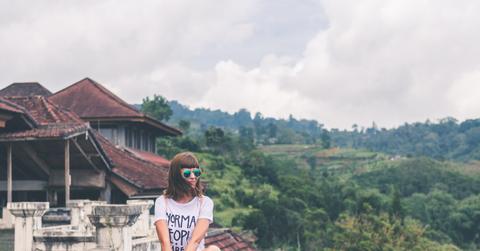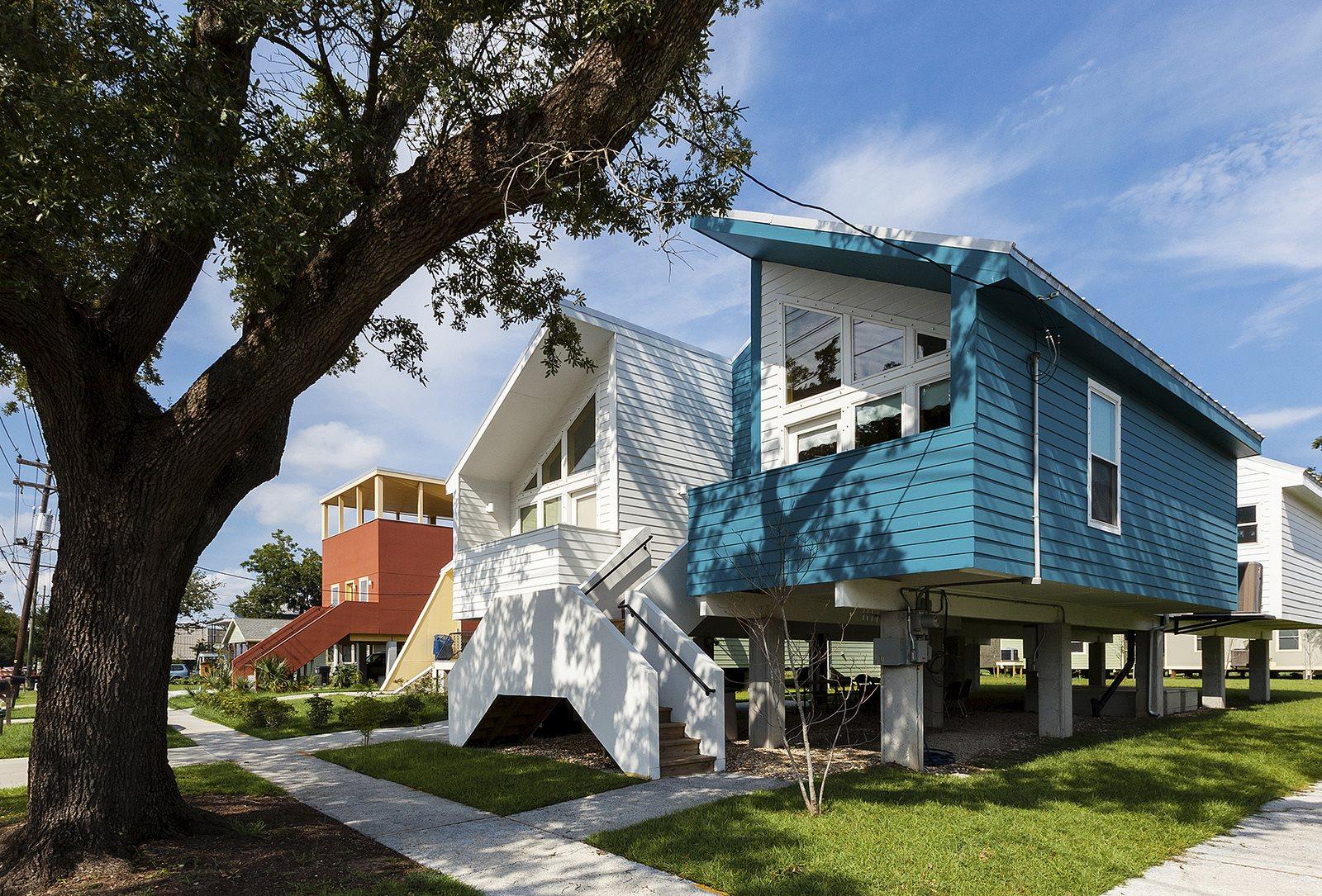What Is A Cool Roof? A Pro Explains This Affordable, Energy Efficient System
Rory Stout explains how a "cool roof" drastically reduces energy costs in the summer.
Updated May 31 2019, 11:04 a.m. ET
Cool roofs can be a little confusing, since they don't all look the same. A cool roof can be a coating, or a bunch of reflective tiles. It's usually a bright color, but not always white. In some ways, a cool roof is more of a concept, but it does have a few defining characteristics: it absorbs less heat, reflects more sunlight, and can dramatically reduce your energy consumption.
To better understand the function and benefits of cool roofs, we turned to Rory Stout, a roofer who specializes in these systems. Stout has been running Be Cool Roof Coatings in Philadelphia since 2011, and he worked on LEED construction sites in New Orleans before that. He broke down the basics of cool roofs, as well as the shifting trends he's seen in sustainable design, for us below.
The following Q&A has been edited for clarity, flow, and length.
Could you define exactly what a cool roof is?
The technical term is a roof that has been designed to reflect more sunlight and absorb less heat than a standard roof. Point blank, a cool roof is basically a roof that reflects the sun’s heat. And when we talk about the sun’s heat, we’re talking about UV rays.
Why are cool roofs big in the sustainability space?
So with sustainability, we’re talking about extending the lifespan of building materials. We’re talking about energy consumption, reducing energy consumption. The definition of sustainability is sustaining something. Cool roofing is something that can be applied to a roof, be cost-effective, and the gains that you get back from that, there’s many benefits to it.
The big element is extending the lifespan of your roof. Everybody’s on a budget. At the same time, the environment is coming to the forefront with what’s going on, how humans are affecting the earth. Cool roofing is just one of those less expensive things that you can do to a building to really have a huge impact.
Just to clarify, when we’re talking about cool roofing, we’re primarily talking about flat roofs with different coatings. Probably eight times out of ten, a cool roof is typically going over an existing roofing system. So you know, you have a pitched roof where you typically have shingles. Terra cotta, or slate. But in the cities, in most urban areas, a lot of the homes have flat roofs. And typically they’re black or silver coated and they’re absorbing a lot of heat. That heat deteriorates and basically degrades your existing roofing system. And in the wintertime, that roof is expanding and contracting all day long. It’s not really designed to do that, and that’s where cracks and tears happen.
So I use the analogy of a wooden deck. If you were to build a wooden deck, you wouldn’t leave that wood exposed. You would put a lacquer or a paint or some sort of waterproofing coating over top to protect that wood. Same thing holds true with your roof. So 24/7, the elements are bearing down on that roof and with UV rays and the heat, it degrades that roof. So if you can protect it, you’re extending the lifespan of that roof for your building, which is truly the definition of sustainability.
A big selling point is the energy efficiency. Why should people be investing in making their homes more efficient?
It all comes down to dollars in many ways. Typically with a cool roof coating, manufacturers are going to give anywhere between a 5-10 year warranty. You can get 15 years, 20 years and up in some of the higher performance coating systems. But if you can protect and preserve that roof and not have to do tear-off, that’s huge from a cost standpoint. And having it be solar reflective for no additional cost is a no brainer. Why wouldn’t you put something on your roof that’s going to help reduce energy consumption in the summertime?
What a cool roof does is make your roof air temperature. So you would be going from something like 140 degrees in the summertime on a hot July day down to say 90 degrees. That might still sound hot, but you just reduced your roof radiating that heat through your building, by 50 degrees, potentially. Which could have a huge impact on energy consumption. That’s going to be savings as well.
The big picture? Well, reducing roof temperature and protecting the roof substrate can help to lower electric demands, which will help reduce power plant emissions, carbon dioxide, and also lowering that building temperature in our cities can help address the urban island effect, which is one of those man-made phenomenons that causes a lot of problems. We have these man-made cities that are soaking up energy and heat and our cities are 10, 12 degrees hotter, sometimes even more, than rural climates in the ‘burbs. In the areas where those two meet, there’s smog, storms, a lot of issues that are caused by that urban heat island effect.
Do you find you’re getting more inquiries about cool roofs today than you were a few years ago? Has the conversation around them changed?
This year, as cool as it’s been outside in the Northeast, there’s been a lot of interest, which is always a good thing to see. Springtime is typically when everybody starts thinking about their roof, because winter is coming to an end. I have seen an interest each year more and more, but I think the public still needs a huge amount of education on what cool roofing is. Cool roofing has been out for a long time, but we just need more consumer awareness about it.
Ironically, in 2010, there was big push in DC, New York, Chicago, Philadelphia. A lot of the cities in 2010 passed legislation on cool roofing, saying that any new building or retrofit has to have a solar reflective roof. There was money from the federal government for grants and training programs. Mayor Nutter in Philadelphia did a coolest block contest, which I was a part of. So there was a big push for cool roofing and it just seems, not to have died down but a lot of the funding for training programs or rebates have dried up a little bit. There were a lot of rebates that came out in that timeframe for homeowners to get a cool roof.
But with that said, this year in Philadelphia there’s a new loan program that’s been linked with solar panels. So homeowners can get a rebate for going forward with solar panels and doing a cool roof coating. So there’s still an incentive out there, but we really need to push for not just in cool roofing but sustainability and energy efficiency as a whole in this country, for sure.
Why do you specialize in this line of work personally?
I was down in New Orleans, post-Hurricane Katrina in 2009. I went down to volunteer and ending up working at the Brad Pitt Make It Right site, which was the largest LEED Platinum building site in North America at the time. And I was exposed to a lot of new and innovative building techniques. I was out of college, my degree is in history [laughs]. So I was exposed to a lot of different things and I said to myself, instead of writing and teaching history, I’d like to make history. This is a cutting edge field — green building, sustainability, and energy efficiency — and we haven’t even scratched the surface yet in America.
I left New Orleans and decided to go down to Philadelphia, where I was trained. I was in class with people who were out of work, unemployed, just out of prison, college graduates. It was a little bit of everything and I was offered a position after the class. I’ve been in Philadelphia ever since. I decided to start up my own company in 2011 and I’m doing this obviously, to feel good about what I’m doing, but the second part is really to provide affordable systems to homeowners. You can help people inside their homes, not only be more comfortable in the demanding summertime months but also waterproof their buildings and give them an affordable roofing system that’s going to help them in the long run. It’s about giving back and helping the environment.



